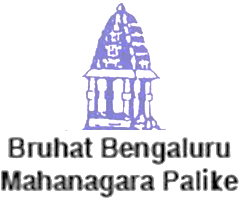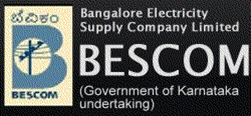HOT TOPICS
SPOTLIGHT AGENCIES
Sustainable public transport system II
Written By n - 28 September, 2009
Bangalore BMTC Bus Analysis sustainable transport Transportation public transport Mobilicity
First pass at adding to blrpraj's document as promised. Additions are in a different font ("Arial") and colour (blue); no modifications or deletions. Comments are welcome. Maybe better to call it sustainable public road transport sytem as the greater enphasis is on those aspects. Some additions may seem "low" level but have been included as they affect the majority of the users and/or praja.
COMMENTS

idontspam - 3 October, 2009 - 15:05


blrpraj - 10 October, 2009 - 18:43
Naveen
"What you state about chennai developing freeways for all traffic with expected exponential growth in traffic is an established fact world-wide. It is well known & understood that more roads & facilities mean more traffic. However, roads are also necessary for some essential uses, but must be charged for use to keep a lid on traffic growth."
My Response: You are absolutely correct about it. The reason I highlighted the obvious fact is that we need not follow the same worldwide model of freeway development. Charging for use to keep a lid on traffic growth has also proven ineffective over time since eventually for a large number of people that charge becomes affordable and we will have many users clogging up the toll road. Private vehicle is the most inefficient use of a given surface area of the roadway. I think we need to follow a unique approach of our transportation infrastructure that rewards mass movement of people. The time wastage of let's say 50 or 60 people stuck in a bus in traffic is very bad and we cannot put a price tag or cost on it. What is the use of building a tollway and charge private vehicles for it's usage while we are not addressing the bottlenecks that impede the mass movement of people in a timely fashion?
One approach of rewarding mass movement of people on roads as implemented in the US is provision of carpool lanes; but I haven't advocated that approach because it doesn't suit Indian conditions just because of the impossible task of enforcing it. Yeah, one way out would be to have our urban freeways built with dedicated bus lanes that are physically separated from the other lanes by concrete barriers.
"Under-charging for road use, free parking, easy availability of finance for vehicle purchase, low fuel price, low subsidies for PTs, inefficient PTs are all reasons why we have this situation in all our cities."
My Response: First of, the reason that the PT is inefficient is because buses share the same space with other road users and are not rewarded for mass movement of people. They stop at traffic lights and get stuck at traffic jams. Now, the inefficiency of PT will change once Metro comes along, but road based PT will still be inefficient and it will not go away. Road based PT will continue to be there and will act as a complement to the Metro just because of the sheer volume of the population in Bangalore and other Indian cities. Now, since PTs are inefficient, there is no incentive for people to get away from private vehicles and such people will continue to use private vehicles and those who can afford cars can afford toll charges as well unless the toll charges are something exorbitant like Rs 5000 per trip or something like that.
Secondly, as far as under charging goes...what is the correct charge? At some point every body will be in the mind set that the charge cannot be afforded by others..so let me pay the charge on the tollway and zip along..but guess what..everybody will be thinking like everybody else so after some time ..you know what will happen.
"Travel on volvo buses costs 25rs each way for about 10km in bangalore. Here, in Guangzhou /China, the same trip by an air-conditioned bus costs 2 yuans or about 14rs, & it does the journey as fast as a car. Thus, the tendency is to use buses or the metro, rather than a car (two wheelers are banned). Further, there are additional costs for car usgae such as road tolls & parking costs that become higher as you get closer to the CBDs."
My Response: The tendency to use cars vs PT should not be viewed in monetary costs alone or per trip monetary costs alone. There are various factors, both from a individual perspective as well as a society perspective -
1) Time savings gained in efficient PT. This is a very significant factor
2) Risk to life - imagine if we could provide an dependable and time efficient PT we could perhaps get more two wheeler riders off the road. 2 wheelers (and pedestrians) are at the most risk on our roads.
3) added stress while driving/riding through our roads and the hassles of finding parking. There are studies that show direct correlation between driving stress and heart diease.
4) added costs of private vehicle operation like insurance, wear and tear, maintenance, depreciation in value, damage due to accidents etc.

Bus based transport will play a critical role
blrpraj - 14 October, 2009 - 18:56
In my opinion even after the Metro comes along, bus based transport will play a critical role. I found an interesting debate on the net of bus vs metro -
http://www.slideshare.net/das_gv/metro-vs-bus-which-is-better
But I think it not a question of bus vs metro. I think it is a question of how bus and metro complement each other and work as a system to move people in mass numbers rapidly.
Another Interesting thing in the slide is the comparison between london & bangalore; plus, the comparison between bogota and bangalore also.
What I don't agree with though is what the presentation says about Metro being a bad decision.
Statistics about london's bus transport system (from http://www.tfl.gov.uk/corporate/media/newscentre/archive/4380.aspx)-
"The London bus network is one of the largest and most comprehensive urban systems in the world. Each weekday 7,500 London buses carry 5.4 million passengers on more than 700 different routes."
Wow, that is a sizable number, inspite of having the world's best (definitely got to be among the top 3 or 5) subway system.
Talking about insufficient street widths in Bangalore and why we can't have bus priority (or bus only lanes) - I disagree with that outlook. I actually felt that London's streets are narrower than some of the streets in Bangalore. When they can have bus lanes then why can't we? When London is planning for BRT why can't we? - http://www.ltconline.ca/Pubs/Long%20Term%20Growth%20Summary%20-%20Update%20Sept%202008.pdf
When Paris can with it's narrow streets can, why can't we ? - http://www.youtube.com/watch?v=PP9l0oUpZ44
How BRT is successful even in Turkey - http://www.vimeo.com/831028 (notice the total grade separation of bus traffic from other traffic and most importantly..there is no chaos)
Now, here is an example of how NOT to implement a BRT, notice the lack of grade separation and see how there is total chaos (can happen only in India I guess  ) - http://www.vimeo.com/931124
) - http://www.vimeo.com/931124
What is wrong with the Bangalore Elevated Tollway - Earlier in this thread it was pointed out that elevated busways are costly, require lot of demolitions and hence are not possible. Well, my question is, haven't we done all the demolitions and poured money into widening hosur road in the first place over the past 15 years and then poured a lot of money to construct the elevated tollway in this video? - http://www.youtube.com/watch?v=n_GAGWSEtzk
In my opinion we have a readymade dedicated busway in the form of the elevated tollway, it only has to be put to good use by the planners; they should immediately shift all public transport buses (including company buses ferrying employees from the city) to the elevated highway without toll and shift all the private vehicles (cars/motorcycles/taxis etc) to the road below which is good enough. The other thing that should be done is connecting the elevated tollway to the nearest TTMC in the city and integrate that TTMC with a metro station.
The flyover building madness - Flyovers themselves per se are not bad. It depends on how they are built and what use they are put to; basically it comes down to a vision and planning. In this video of Ahmedabad BRTS notice how the buses on the BRT lane are waiting at a traffic light -
http://www.youtube.com/watch?v=LGvWZSRTGQo
Easily this can be improved and the waiting avoided by building a flyover just for the BRT lane. This would be a classic case of rewarding public transportation/mass movement of people with suitable infrastructure. For those who aregue that building flyovers dedicated to BRTS lanes; my question would be; haven't we already spent crores of rupees on flyovers, road widening etc?... And what are the results from that? - traffic jams for everybody - private as well as public transport.

@IDS - trunk routes or not..does not matter
blrpraj - 14 October, 2009 - 20:25
"All of these are only TRUNK routes. On the trunk routes they have priority but not the feeders. PT includes not just metro type trunk routes they also include feeders and the timing is cumulative of both. The feeders are not expected to be fast they are expected to have increased reach and drop you at the nearest trunk stop so you can do the journey on a fast route. I have lived in the Bay area and the feeders to the Bart stations arent exactly as frequent or as fast as the BART itself. THey go around the town collecting people before they stop at few BART stops. This is like comparing the time taken on London underground alone vs comparing the total time taken from origin to destination including a bus feeder segment in the route."
My Response: IDS, trunk routes or not, does not matter. The point is well designed PT on an average for most people is faster than private transport (PT in Indian cities mostly are an exception since they are lousily designed without vision).
For example, in the bay area, it is still faster to drive up to the Fremont station, park there and then take the BART all the way into town. Yes, i agree with you that feeder buses add to the time but I found that a car trip from my Fremont apartment took more time on quite a few days during commute hour than the other option of getting to BART station via a feeder bus then taking the BART into town. One disclaimer here...don't expect PT to be faster if you are travelling a mile or 2, as the commute distance progressively increases so does the advantage (meaning time savings) of mass rapid transport with efficient feeder services. Going by your statement, time taken to drive all the way to town must be significantly lesser than the time taken to get to BART by feeder service and then take the BART. But it actually turns out to be the same on some occassions and most occations faster to get onto a BUS and then take BART all the way to SF. Unless of course..you are in the carpool lane all the way into town and hope that there are no accidents.
Similar scenario in LA, it is much faster to drive to norwalk let's say from Anaheim and take the metro into town or the offices near LAX airport rather than drive on the dreaded 91 and 105 freeways.
But, bottome line is, shouldn't we be taking the BART model and see how we can improve on it to fit bangalore? Perhaps by making the feeder service faster by introducing bus priority lanes and perhaps integrating high rise apartment complexes with feeder bus stations and perhaps with the metro stations themselves. Office complexes could also be integrate into such stations. All these integrations being done via walkways. A million reasons can be cited why many of these things probably cannot be done in Bangalore..but there is only one reason why i HAS to be done and the reason is -> Bangalore is in a mess and it has GOT TO do it.
"So you think I pulled my comparitive travel times out of thin air?"
My Response: Well...I didn't say that . But, now that you mention it, who knows?
. But, now that you mention it, who knows? . Please, let's be sensible when comparing...obviously if somebody is living 10 miles away from a BART station and away from the alignment ..had to catch a bus 10 miles south to the BART and then double back north on the BART obviously it does not make sense to compare and the time taken would obviously be more.
. Please, let's be sensible when comparing...obviously if somebody is living 10 miles away from a BART station and away from the alignment ..had to catch a bus 10 miles south to the BART and then double back north on the BART obviously it does not make sense to compare and the time taken would obviously be more.
And last but not the least, since you have lived in the Bay Area...if BART and Caltrain weren't faster given that they both cost quite a bit depending on where you are going..you wouldn't be seeing the levels of ridership seen on them. Keep this in mind, San Jose to Millbrae takes just 50 mins in an express caltrain..try doing it in private transport in commute hour..unless you are driving at breakneck dangeorous speeds(which you can't anyways due to traffic)..it takes 1.5 hours at the least. At the San Jose end..if you time yourself correctly add another 10 mins at most to take a caltrain shuttle to/from the downtown areas where many offices are located.
Also, one more way of comparison (food for thought for all the readers) ..in both the bay area and LA, over past couple of decades as traffic has increased so have the commute times. but guess what..metro rail travel times have remained constant (yes, I am stating an obvious fact)..but again food for thought to show how progressively over time for the same commute time...private transport commute time has signficantly increased over that period compared to PT (most specifically rapid transit systems ) staying constant.

Re:GOALS OF A GOOD PUBLIC TRANSPORTATION SYSTEM
Vijay Srinivas - 13 May, 2013 - 15:06
What about ROUND THE CLOCK SERVICE. Why should anybody use public transport, if they are stranded while returning from a movie or a concert, or even from an office night shift, at, say 11 pm?
PRAJA.IN COMMENT GUIDELINES
Posting Guidelines apply for comments as well. No foul language, hate mongering or personal attacks. If criticizing third person or an authority, you must be fact based, as constructive as possible, and use gentle words. Avoid going off-topic no matter how nice your comment is. Moderators reserve the right to either edit or simply delete comments that don't meet these guidelines. If you are nice enough to realize you violated the guidelines, please save Moderators some time by editing and fixing yourself. Thanks!





